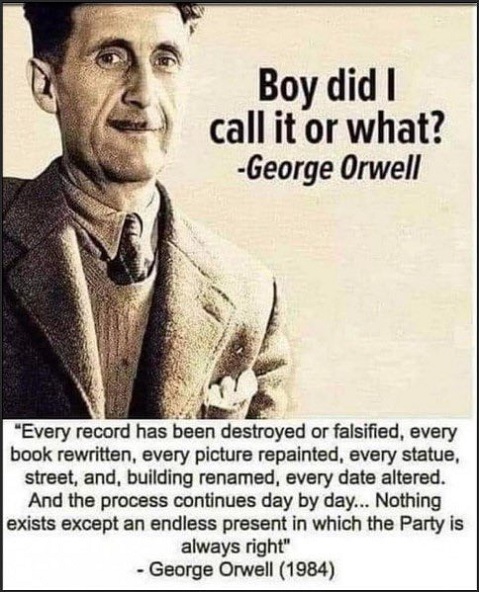


I have always thought of Real Clear Politics as a site which has a sort of right-ish editorial stance, but which fearlessly links content from across the political spectrum so that readers can judge for themselves in whom they should place their trust.
On April 4, Carl Cannon published this:
en days after the 2020 election, Tom Bevan, co-founder and president of RealClearPolitics, received an email from a New York Times reporter who covers the media. The reporter, Jeremy W. Peters, advised Bevan that his newspaper was working on a story about RCP and asked for responses to various questions and accusations. Four days later, Peters' critique was published under the headline "A Popular Political Site Made a Sharp Right Turn. What Steered It."
The sleight-of-hand was right there in the headline. The New York Times simply declared that RCP "made a sharp right turn," and suggested it will document how this happened.
The Times' story asserted that during the period of counting absentee and late-arriving mail-in ballots, RCP took three days longer than other news organizations to call Pennsylvania for Joe Biden. It noted disapprovingly that we aggregated stories from other news outlets quoting Trump supporters who questioned the election results. It suggested that the RCP Poll Averages were manipulated to be favorable to Donald Trump. Peters focused on RCP staff layoffs in September 2017, and claimed we'd hired partisan Republicans to replace them. He reported that the RealClear Foundation, a nonprofit that supports our journalism, receives contributions from conservative donors. He also called into question a RealClear Investigations exposé naming the whistleblower whose complaints led to Trump's first impeachment.
The co-bloggers at Instapundit seem to have been watching RCP, and Mark Tapscott wrote this:
RCP'S CANNON OBLITERATES NYTIMES: For reasons known only to him, RealClearPolitics Washington Bureau Chief Carl Cannon waited three and a half years to respond to a classic piece of cheap-shot "reporting" by the New York Times' Jeremy Peters.
Trust me, it was worth the wait because Cannon systematically, factually and precisely exposes a hatchet job that demonstrated in the days immediately after the 2020 election just how deep is the agit-prop mire into which the Mainstream Media has fallen.
Tapscott's comparison of RCP's journalistic standards to those of the NYT at the link is also interesting.
Back to Carl Cannon's April 4 piece:
Jeremy Peters declined to be interviewed for this rebuttal, though he was courteous about it. Nor did he reach out to me in 2020, beyond contacting Tom Bevan. It didn't hurt my pride, but I'm the most experienced newsman at RCP; I oversee our original content, I direct our reporters, and I have written more words for RealClear than anyone else.
Nor was there any bad blood between me and the "paper of record." In the 1980s, the Times credited my groundbreaking coverage of the Catholic Church sex abuse scandal. In the 1990s, Howell Raines tried to hire me. Three books I've co-authored have been positively reviewed by the Times. When I covered the White House for National Journal, the Times' book editor asked me to review a book about Dick Cheney. I have had friends at that newspaper. Although I'm not famous, I'm not unknown in Washington journalism. What I'm best known for is being relentlessly nonpartisan. If someone is writing about bias at my organization, calling me would have been the obvious place to start.
I shouldn't have waited three years to respond to the Times but will do so now.
It's a great piece, full of interesting information. You should probably read it. The idea that the present Times staff would think of Carl Cannon as "non-partisan" is kinda funny, though. Check out this 2009 post by Ace (don't comment on old threads) on The Obit Ted Kennedy Deserves:
But the real find here is this Carl Cannon piece on Chappaquiddick and the media's selective memory.
I thought it was good piece as it explained why conservatives care about Chappaquiddick and liberals in the MSM are wrong to dismiss these concerns as merely held by "haters."
But then it got... appalling, as it recounted the Chappaquiddick Manslaughter in harrowing detail. Details I never knew about before. It's the little things that stick with you, and there are some little things here (not little at all for Mary Jo Kopechne) that truly bring home how vile this man was.
So, Howie Kurtz is surprised Chappaquiddick and Kopechne are hot search terms, and that some of the "comments are pretty harsh?"
He ought to read Carl Cannon's piece. You know what's harsh? . . .
Carl Cannon's belated rebuttal to the NYT is part of their 1735 Project. Here's the introduction:
The media is in trouble. Its traditional business model has all but collapsed, its journalism standards are in freefall. Americans have noticed. Voters in the United States express historically high levels of mistrust in the press. Faith in our nations political system is disintegrating at the same time. Belief in government has never been lower. These two trends � interrelated, mutually reinforcing � have been years in the making. Together, they constitute a crisis in confidence in two institutions essential to self-government.
They are taking on some deep questions there.
Then there's this from Ed Driscoll on March 30:
DISPATCHES FROM THE MEMORY HOLE: Real Clear Politics' Samizdat Prize, Behind The Scenes Stories Of Censorship: Matt Taibbi, Jay Bhattacharya, And Miranda Devine.
I didn't know they had a Samizdat Prize.
Miscellany
Humorous.
Music
Hope you have something nice planned for this weekend.
This is the Thread before the Gardening Thread.
Last week's thread, March 30, What happens when journalists from the left decide they can criticize the left?
Comments are closed so you won't ban yourself by trying to comment on a week-old thread. But don't try it anyway.
